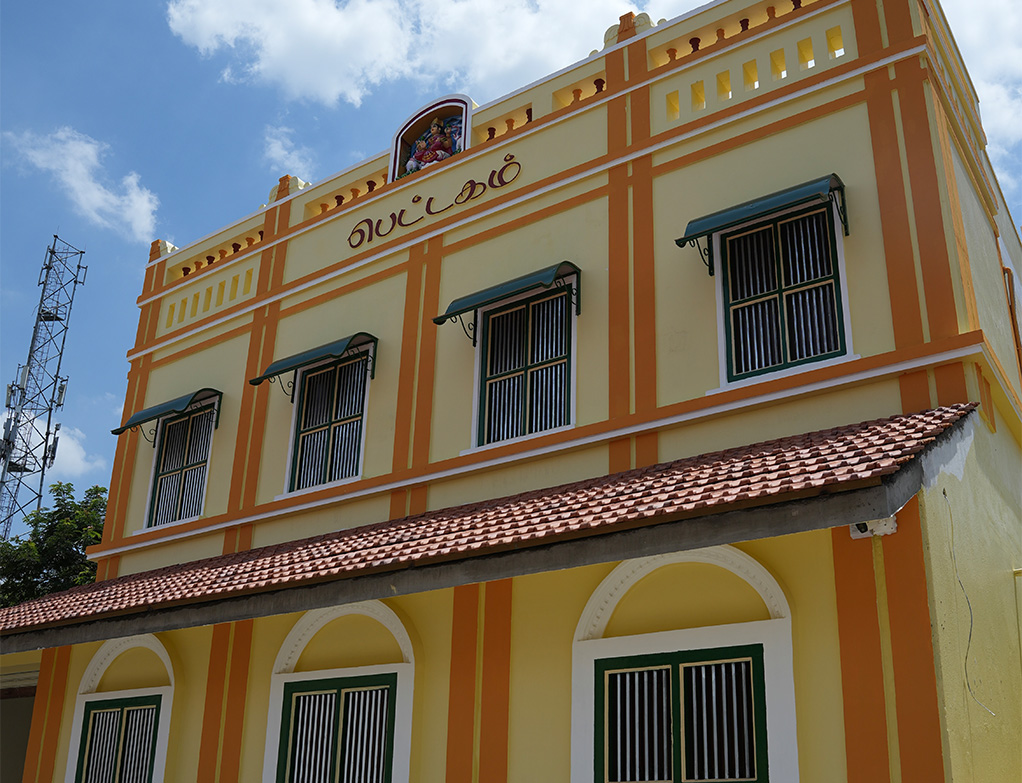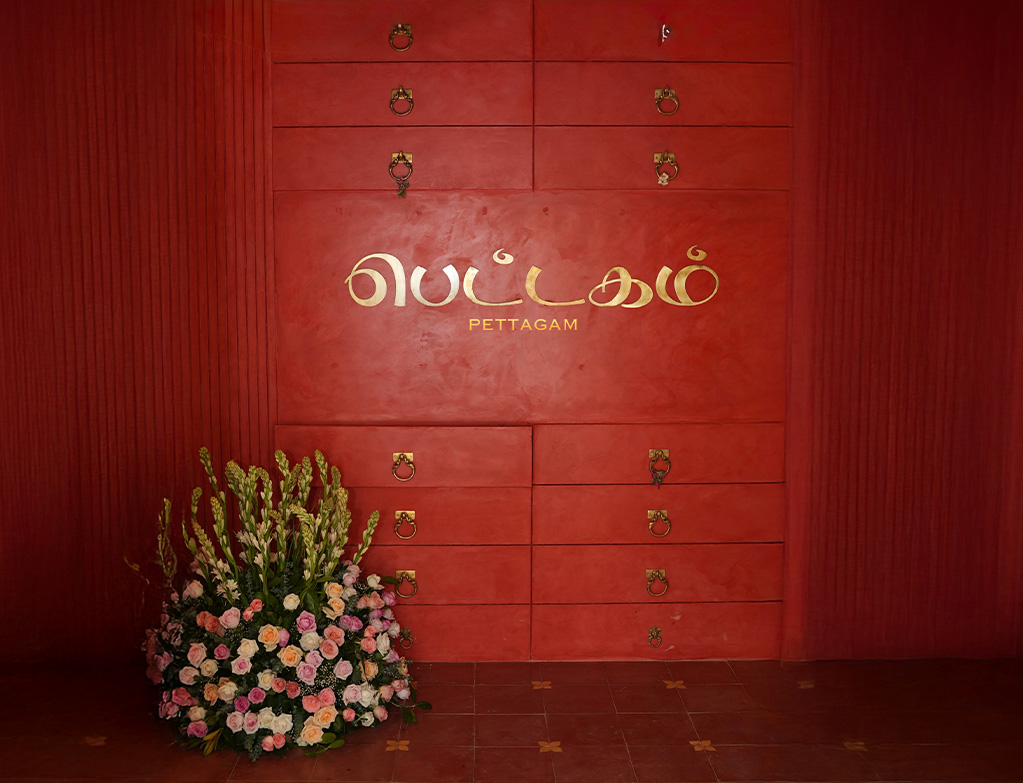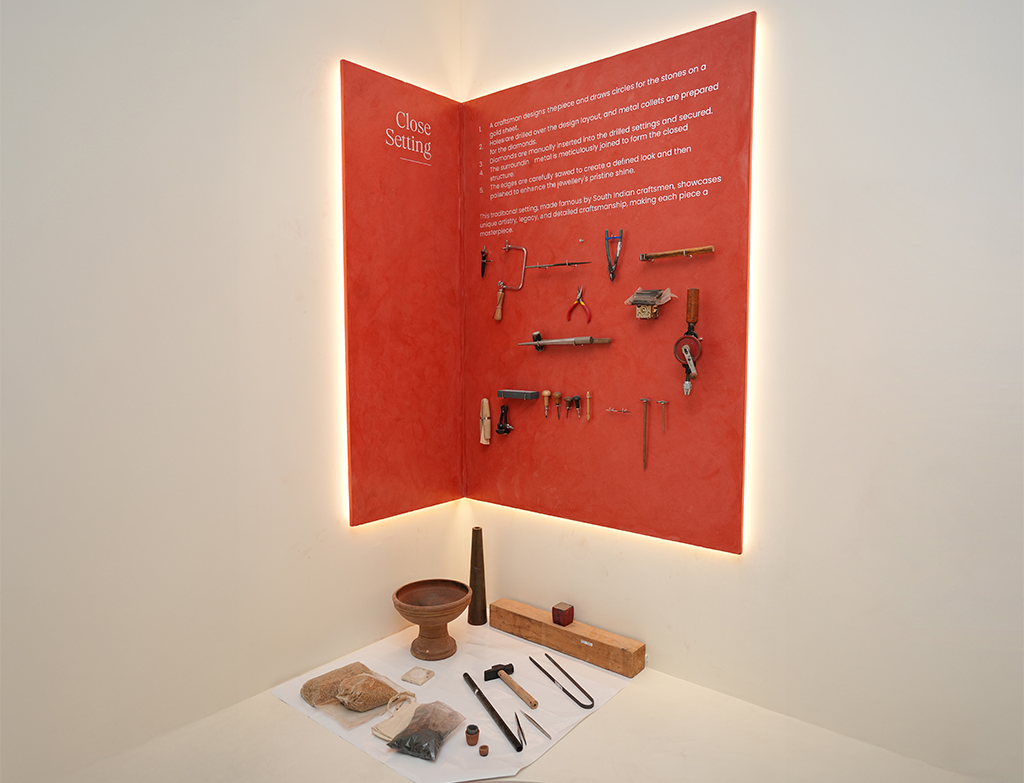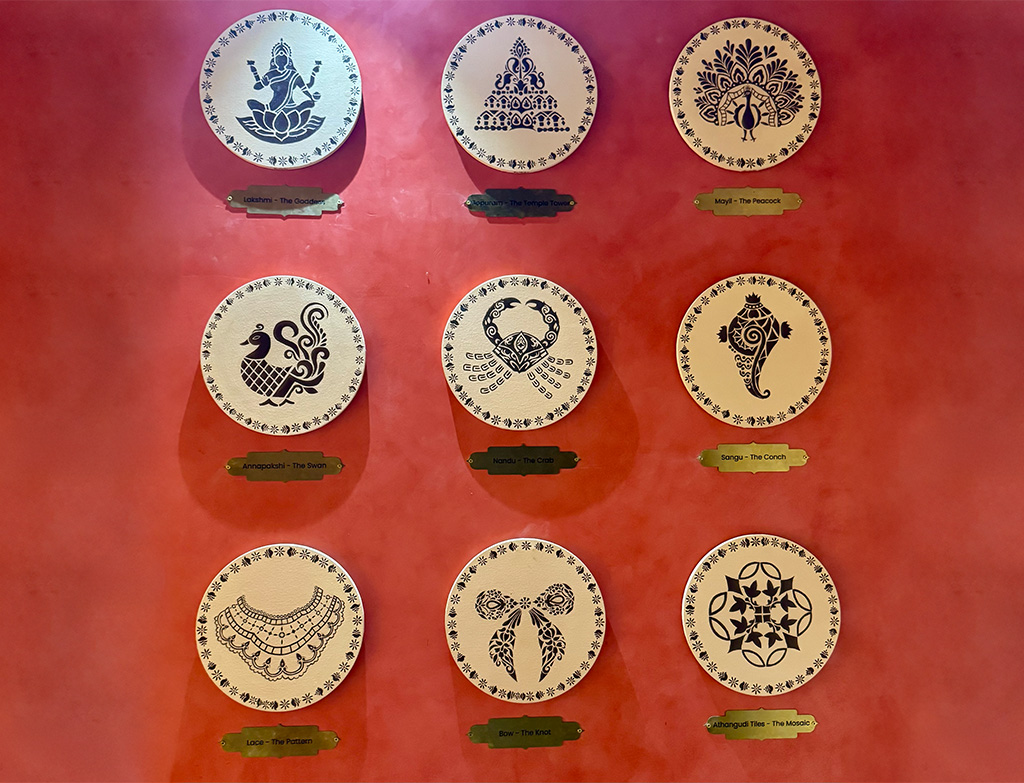Curated by Meenu Subbiah, Pettagam is a rare treasure trove of stories, heritage and traditions; and an immersive invitation to experience Chettinad’s jewellery legacy
By Prerana Nikhade
On a sun-dappled Friday morning in Karaikudi, I prepared for what could only be described as a history lesson. But this wasn’t the sort you’d find in a dusty classroom or on the yellowing pages of a textbook. This was a history class inside a vault — a vault that safeguards the stories of the Nagarathars community and their bijoux: rare, resplendent and one-of-a-kind.
“Pettagam” — the word itself means a strongbox or iron chest used to store a family’s treasures — is India’s first private museum dedicated to Chettinad jewellery, founded and curated by Meenu Subbiah, luxury jewellery designer and founder of the brand Meenu Subbiah in Chennai.

Standing tall in the quiet lanes of Karaikudi, Pettagam is unmissable. Its unassuming yellow façade belies the history within and a striking red interior greets you the moment you step through its doors. The design is symbolic, mirroring the chest-of-drawers concept that inspired its name.
Inside, a carefully crafted storyboard unfolds the story of the Nattukottai Nagarathars — a mercantile community of fearless traders who once crossed oceans in pursuit of opportunity and brought the world back home with them. History notes that the Nagarathars’ influence was so significant that they were even invited to Queen Victoria’s coronation. Their global exposure shaped their culture — from weaving European nuances into their cuisine to infusing Art Deco elements into their jewellery.

For Meenu, this history of hers was something she felt compelled to preserve. Almost 25 years ago, she began a deep dive into researching Chettinad jewellery, an undertaking that would eventually consume two decades of her life. “When I was researching for my book, one of the biggest challenges I faced was accessing information. Most of the knowledge about Chettinad jewellery wasn’t documented — and when it was, it was kept within the families. I could access information from my own family, but it was much harder with other families who owned some of the rarest pieces. Many of them didn’t have detailed records or even know much about how and where these pieces were made. I met countless people — seniors from different families, historians — and even travelled to multiple countries.”
That exhaustive research revealed just how vast and rich the subject was. And it led to a realisation. “After going through this process, I realised that while some people would sit down and read a book, many wouldn’t, even though they’d love to know about this heritage. That’s when the idea of Pettagam came to me. A museum felt like a way to make this legacy more accessible, engaging and visually comprehensible for everyone.” And thus, Pettagam was born — a two-floor edifice built in traditional Chettinad style, designed to be a fully immersive experience. Here, 20 years of research have been transformed into a narrative journey through time, technique and tradition. “When you talk about Pettagam, it’s about telling the story of a region, its people, and its culture. That’s why we begin the storyboard by introducing visitors to the Nattukottai Nagarathar community, its philosophy, and eventually moving to the deeper significance behind every piece. In Chettinad, no ornament was made just for adornment — every piece carried significance. For example, the ‘Gowrishankaram’ is a Rudraksha set in an ornate frame, used to give blessings, and it could only be worn by men after turning sixty. Pieces like these are deeply rooted in tradition and unique to our community. The jewellery style itself is also distinct — solid, practical and flexible — typically crafted in 22-carat gold in close settings. It wasn’t always about diamonds; rubies, emeralds and their combinations were far more common. We made sure to include iconic designs like the ‘Mayilmagari’ where the peacock is shown in full bloom — a motif significant to the Nagarathars,” Meenu shares.

Her meticulousness is echoed by those who have seen her work up close for the last 20 years. “Watching Meenu over the years, I’ve seen how her love for jewellery goes far beyond adornment. She has always been drawn to design, constantly seeking to create something unique and meaningful. Her passion for heritage and her research over the past two decades have shaped a vision that is truly remarkable — India’s first Chettinad jewellery museum in Karaikudi,” says Jalpa Vinodkumar, Client Relationship Director at Asahi Technologies LLC and a long-time friend of Meenu.
Arti Lawrence, Director at Govideo Px LLC and another close friend, adds, “Meenu (Subbiah) always wore her Chettinad roots like a badge of honour, infusing every detail with the pride of her culture, architecture, and heritage jewellery. Pettagam stands as her personal tribute to the Chettinad culture and history she cherishes so deeply, turning her legacy into an enduring celebration for all.”
The experience doesn’t just limit to the visual walk through on the ground floor, it culminates in a theatre room where a short film offers an intimate look at the craft itself — the glint of diamonds, the precision of intricate settings and the hypnotic rhythm of artisans at work. It even spotlights the near-extinct art of traditional close setting — a labour-intensive technique still used in fewer than 10% of jewellery pieces worldwide.

But Pettagam saves its most stunning narrative arc for the second floor, which is divided into three sections: Vilasam, a collection of classic Chettinad ornaments such as kandacharams, poocharams, and mullaicharams. Then comes Vamsam, which reimagines regional artistry from across India — think Kerala’s kasumalas, Chola and Pandya-era temple jewellery, Mughal jali wrist adornments, and Rajasthani kundan masterpieces. And lastly, Menaya, which brings the journey full circle with bold, contemporary pieces that speak to today’s wearer.

Walking through these galleries, I couldn’t help but think of Pettagam as “the Louvre of Chettinad jewellery” — a place that could very well turn Karaikudi into a global cultural pilgrimage for jewellery and culture connoisseurs. When I asked Meenu if this was indeed her vision, she smiled and said, “Absolutely. While the Nagarathars today know about their culture, Pettagam opens up that world to a much wider audience. For visitors from across the globe who come to Chettinad, the museum offers a first-hand experience of the region — its culture, its people, and the lives they led. Many travellers are fascinated when they see the countless mansions in this small area, often asking, ‘Who built these? Why are they here?’ Pettagam answers those questions — explaining the history of the merchant community, the businesses they were in, and how they created such wealth, all while building homes with incredible artistic taste. Within minutes of walking through Pettagam, you can visualise their world — where they travelled, what influenced their style, and how they lived. For anyone from any part of the world, it’s an experience that gives a fair understanding of Chettinad’s legacy.”
Pettagam officially opens to visitors in the second week of October, by prior appointment. “They can book a prior appointment so that we can assign a guide who will walk them through the entire museum,” says Adithi Ganeshan, Meenu’s daughter and a budding jeweller.
But the story doesn’t end here. What about Pettagam’s future? Will Adithi be the one to carry forward this legacy? “There’s absolutely no pressure on her — she’s free to take her own path. That said, Adithi has been deeply involved in Pettagam from the beginning; in fact, she designed the entire museum and allowed me to focus on my research in peace! (Laughs) We’re happy that her interests align so closely with ours and we’re nothing but excited to see how she shapes Pettagam’s future while also pursuing her own creative work,” Meenu says as we conclude our conversation.
A cultural landmark in every sense, Pettagam is poised to bridge generations. As I step out into the sunlit streets of Karaikudi after sipping a cooling goli soda (a local favourite beverage), I can’t help but feel that Pettagam has quietly unlocked a door — one that invites the world to see Chettinad as a legacy waiting to be celebrated.
Note: Guests can visit by making an appointment beforehand via email or phone: concierge@meenusubbiah.luxe / +91 95665 03736.

 Add to favorites
Add to favorites
